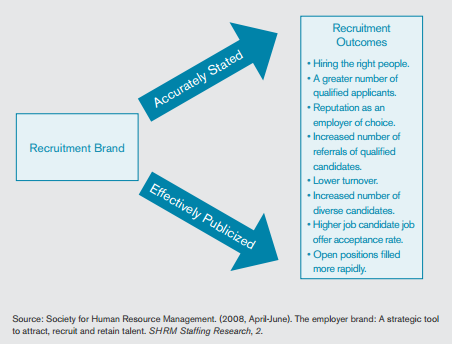When it comes to recruiting ideal job candidates, it doesn’t hurt to have luck on your side. But what if you could make your own luck? Take these seven recruiting habits to heart and increase your odds of hiring the best of the best.
1. Visualize your long-term goal
It may sound hokey, but visualizing the “perfect” job candidate for a critical position (whether it currently exists or not) could be your key to attracting exactly that type of applicant when the time comes. Instead of relying on keyword-heavy job descriptions to attract a stockpile of so-so candidates desperate for an interview, have a clear vision of the types of leaders you’d like in your company. Then, always have this profile in your mind as you network. Oftentimes the right candidate comes along before there’s a job to fill. Stay connected while you keep your eye on the prize.
2. Know thine “enemy”
Competition for top talent can change over time. You may know your direct competitors in your industry and in your geographic region, but how connected are you to outside trends? Many up-and-coming industries these days start recruiting at the college level and can even influence the career paths of future talent. If you’ve sensed a shift in talent, reflect on specific questions like: Is the gaming industry luring away your software developers? Is the solar energy industry enticing your oil and gas engineers? Are you finding an increasing number of Austin employees jumping ship for the Portland or Seattle areas? Find these “dark horse” trends and keeping them in mind while recruiting.
3. Know thyself
What is your company culture? If you can’t immediately answer that question, your company is experiencing an identity crisis that is no-doubt affecting recruiting efforts. Create an authentic and clear employer brand that communicates how you’d like potential employees to view your company. Then, highlight that brand everywhere you recruit: your website, in recruitment literature, and at events. Master this and the Society of Human Resource Management (SHRM) suggests the following results:

4. Find a dance partner
Working with a staffing partner can put time and resources back on your side in more ways than you may realize. For instance, more heads can mean better ideas. Temp jobs continue to be filled at a much higher rate than permanent positions. A staffing specialist can help decide whether the jobs you need to fill should be temp, temp-to-hire, contract or permanent. Plus, certain arrangements—like contingency search—can put several staffing specialists on your side at once, allowing you to get better results faster than recruiting on your own.
5. Know when to pull in a headhunter
Call us biased, but—when needed—headhunters are worth the investment. These professionals have the resources and connections to attract, source and screen even passive job candidates: Top-performing, elusive talent who aren’t actively looking for a new job. These candidates are in such high demand that FORTUNE recently coined 2014 “the year of the ‘passive’ job hunter.” These individuals won’t notice your listing and won’t attend your recruitment event. Frankly, they don’t need your job at all. So what’s a hiring manager to do? Enter the headhunter, who specializes in this very area. In fact, HT Staffing uses specialized recruiting industry headhunters to find some of our own best in-house players.
6. Use your network to its fullest
Forget six degrees of separation. In many cases, your ideal job candidates are within two degrees of your own professional network, says peak performance expert Chris McIntyre. Don’t overlook the power of your employees’ networks either. As we’ve discussed in a previous article, running an employee referral program could be just what you need to increase an already terrific staff.
7. Rinse and repeat
Create consistency in recruiting with these and other smart strategies and standardize your hiring process for the best results. Deloitte’s Talent Edge 2020 report from 2012 states that 83 percent of HR executives are not happy with their current talent management programs. In part, the root of this problem stems from inconsistent recruiting, hiring, and retaining practices. Be deliberate and steady to win this race.
What do you think? Is this a solid lucky seven, or would you add some of your own tried-and-true habits for success?
Image credit: lightwise / 123RF Stock Photo



